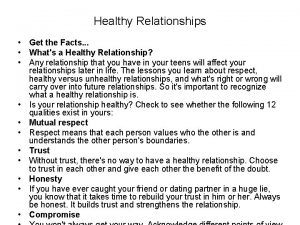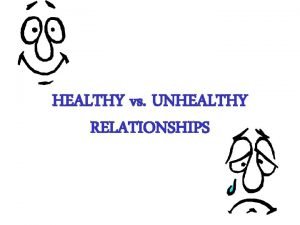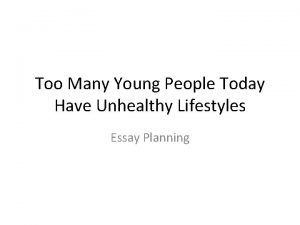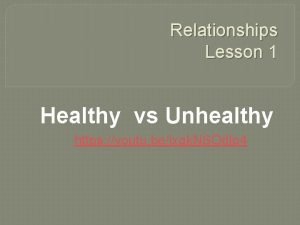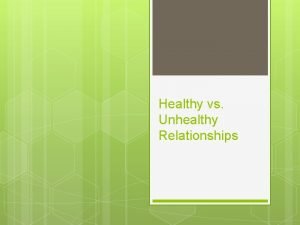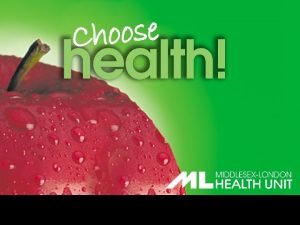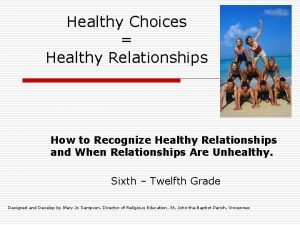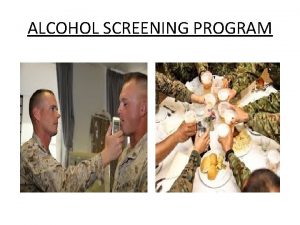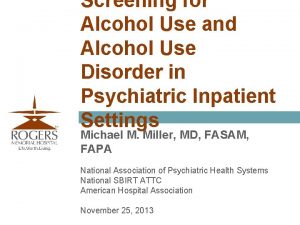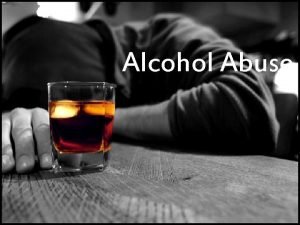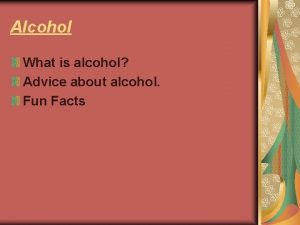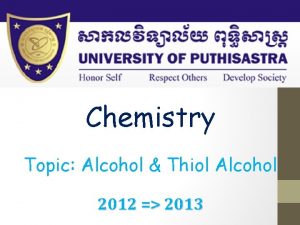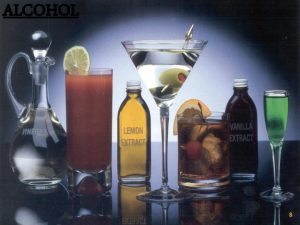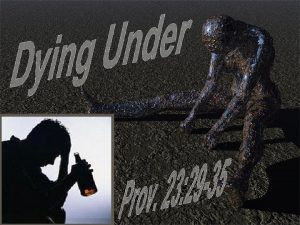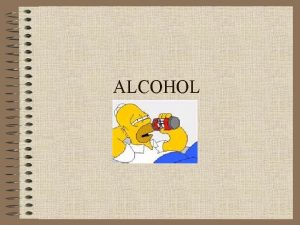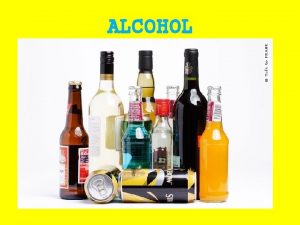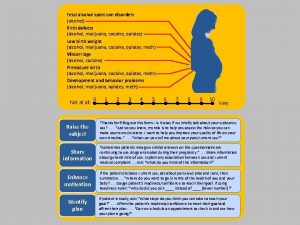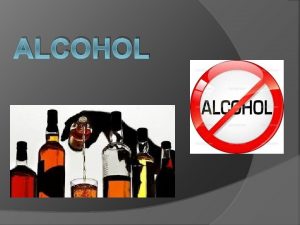Review of Screening and Treatment of Unhealthy Alcohol





















- Slides: 21

Review of Screening and Treatment of Unhealthy Alcohol Use in People Living with HIV Srinivas Muvvala, MD MPH

What defines at-risk alcohol use? Drinks/ day > 4 Drinks/ week > 14 Women > 3 > 7 All Age >65 > 3 > 7 Men 1 drink =

What is a standard drink? • 14 grams of alcohol – 12 ounces of beer (350 ml) – 5 ounces of wine (150 ml) – 1. 5 ounces of distilled spirits (45 ml)

Spectrum of Alcohol Use

Prevalence and Impact of Alcohol Use among People living with HIV (PLWH) • Among PLWH receiving medical care: • 54% report recent alcohol use (CDC 2016) • 27% screened positive for unhealthy alcohol use (Crane AIDS Behav 2017) • Alcohol negatively impacts HIV disease control, medical and psychiatric comorbidities • Dose response effects on antiretroviral medication adherence • Cardiovascular disease, liver disease, malignancies, cognitive dysfunction • Depressive symptoms • Sexual risk behaviors and HIV transmission

Screening for Unhealthy Alcohol Use: AUDIT-C How often do you have a drink containing alcohol? a. Never b. Monthly or less c. 2 -4 times a month d. 2 -3 times a week e. 4 or more times as week How many standard drinks containing alcohol do you have on a typical day? a. 1 or 2 b. 3 or 4 c. 5 or 6 d. 7 to 9 e. 10 or more How often do you have six or more drinks on one occasion? a. Never b. Less than monthly c. Monthly d. Weekly e. Daily or almost daily Score 0 to 12: a=0 points; b=1 point; c=2 points; d=3 points; e=3 points In men: Score of 4 or more is considered positive In women: Score of 3 or more is considered positive

Drinks to Get a Buzz Lower in HIV Mc. Ginnis et al, AIDS Behav, 2015

Alcohol and Quality of Care Those with unhealthy alcohol use were less likely to have CD 4 counts, HIV visits or appropriate lipid screening in the past 12 months. Korthuis PT et al. , JAIDS, 2012

Alcohol and Retention in Care Monroe A et al JAIDS 2016

Alcohol and Mortality Risk by HIV status Justice AC et al DAD 2016

Suboptimal Treatment of Alcohol Use in HIV Clinics §Unhealthy alcohol use is not consistently discussed with HIV providers §Few HIV providers report provision of evidence-based alcohol related care § Limited prior training of alcohol pharmacotherapy §In VA-based sample, among PLWH with unhealthy alcohol use and documented alcohol use disorder only 6% were prescribed alcohol pharmacotherapy Metsch et al. DAD 2008; Chander et al. JAIDS 2016; Williams EC et al. DAD 2017

Alcohol Pharmacotherapy

Disulfiram Property Description Mechanism Blocks aldehyde dehydrogenase causing build-up acetaldehyde with alcohol consumption Effect Unpleasant feeling with alcohol consumption (flushing, headache, vomiting, dyspnea, confusion) Dosing Initial dose 250 mg daily 500 mg Side Effects Idiosyncratic fulminant hepatitis, neuropathy, psychosis and symptoms that resolve with stopping the medication (headache, drowsiness, fatigue, rash, pruritus, dermatitis, garlicky taste in mouth) Cautions Increased reaction in patients with CAD, receiving treatment for HTN, or with esophageal varices; need to understand effects of medication; avoid if rubber, cobalt or nickel allergy; pregnancy; ATV may interfere Administration Goal is abstinence; supervised dosing most effective Clinical Effectiveness Limited efficacy in clinical practice Saitz R NEJM 2005; Franck J Current Opinion Neurobio 2013; Mc. Cance-Katz EF Am J Add 2014

Acamprosate Property Description Mechanism NMDA modulator to promote glutamate and GABA balance; decreases dopamine excitability Effect Decreasing craving Dosing 666 mg three times daily Side Effects Diarrhea Cautions Contraindicated in renal insufficiency (creatinine clearance < 30 ml/min); half a dose in those with creatinine clearance >30 -50 ml/min Clinical Effectiveness Variable data (negative results COMBINE and PREDICT); most effective with detoxification prior to treatment initiation and goal of promoting and maintaining abstinence Saitz R NEJM 2005; Franck J Current Opinions in Neurobiol 2013; Maisel NC Addiction 2013

Naltrexone Property Description Mechanism μ-opioid receptor antagonist Effect Decreases euphoria with alcohol Decreases alcohol craving Decreases heavy drinking days Dosing Oral: 50 mg daily Injectable: 380 mg Side Effects Nausea, headache, dizziness, nervousness, fatigue, insomnia, vomiting, anxiety, somnolence, dry mouth, dyspepsia, elevated LFTs, depression Cautions Contraindicated in patients with opioid use; relatively contraindicated in patients with hepatitis or cirrhosis Suggested Monitoring Symptoms and periodic LFTs Administration Appropriate for those not committed to abstinence and does not require abstinence prior to initiation Saitz R NEJM 2005

Naltrexone Safety in HIV: LFTs Tetrault JM et al. ACER 2011

Naltrexone Safety in HIV: HIV Biomarkers Tetrault JM et al. ACER 2011

Acamprosate vs. Naltrexone §Need to treat 12 people with acamprosate to prevent return to any drinking §Need to treat 20 people with oral naltrexone to prevent return to any drinking and 12 to prevent return to heavy drinking §No significant differences with acamprosate vs. naltrexone in direct comparisons Jonas 2014 JAMA

Extended-Release Naltrexone in HIV Treatment Settings Korthuis PT Addiction 2017

Your experiences?

Contact Information Beth Porter, MBA (Project Coordinator) elizabeth. porter@yale. edu Srinivas Muvvala, MD (Co-Investigator) srinivas. muvvala@yale. edu E. Jennifer Edelman, MD, MHS (Project Director) ejennifer. edelman@yale. edu David Fiellin, MD (Principal Investigator) david. fiellin@yale. edu Kenneth Morford, MD (Postdoctoral Fellow) Kenneth. Morford@yale. edu
 What is secondary alcohol
What is secondary alcohol Oxidation primary alcohol
Oxidation primary alcohol Toxic relationship scenarios
Toxic relationship scenarios Healthy relationships facts
Healthy relationships facts Healthy unhealthy relationship scenarios
Healthy unhealthy relationship scenarios Healthy relationships lesson plans
Healthy relationships lesson plans Define the relationship chapter 14
Define the relationship chapter 14 Unhealthy boundaries definition
Unhealthy boundaries definition Teenager unhealthy lifestyle essay
Teenager unhealthy lifestyle essay The problem of emotionally unhealthy spirituality
The problem of emotionally unhealthy spirituality Healthy vs unhealthy relationships worksheet
Healthy vs unhealthy relationships worksheet Healthy vs unhealthy dating relationships
Healthy vs unhealthy dating relationships Unhealthy symbiotic relationship
Unhealthy symbiotic relationship Healthy vs unhealthy relationships
Healthy vs unhealthy relationships Plant classification worksheet
Plant classification worksheet Pictures of a billion dollars
Pictures of a billion dollars Unhealthy communication
Unhealthy communication Indirect cost of expatriate failure
Indirect cost of expatriate failure Idea screening examples
Idea screening examples Use case model in software engineering
Use case model in software engineering Waterfall strategy in international marketing
Waterfall strategy in international marketing Adjudication status pending hireright
Adjudication status pending hireright



